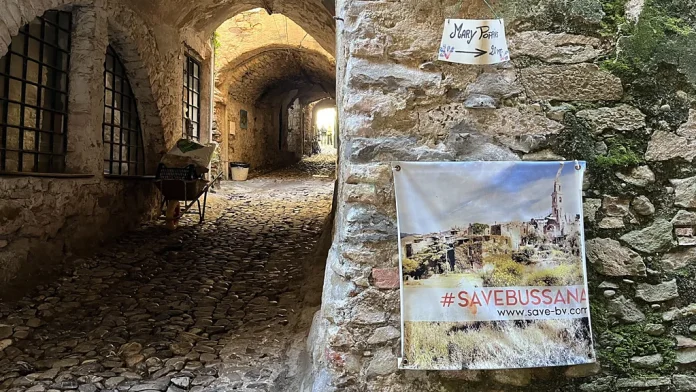Puppet maker’s house in the medieval village of Bussana Vecchia, rain pattering on the cobblestones, casting a quiet aura over the narrow streets. Through the glass door, Nina Franco welcomes me with a bright smile. Dressed in blue workman’s overalls splattered with paint, a scarf tied around her hair, she invites me into her workshop where hand-puppets and marionettes overflow from wooden crates and hang from nets. Miniature theatres and characters from commedia dell’arte share the space, a testament to her craft.
Franco arrived here in 2022, joining Bussana Vecchia’s diverse community of international artists. Over tea on the workshop floor, she shares tales of the village’s rich history and its present-day challenges.
Perched atop hills above Sanremo on the Italian Riviera, Bussana Vecchia stands out among the chic coastal towns. Its modern history began tragically on 23 February 1887, during Lent, when earthquakes razed much of the village. The stone roof of the church collapsed, claiming lives and displacing residents to makeshift barracks below. Promised reconstruction never materialized, leading to the abandonment of the original village by 1894.
Bussana Vecchia remained a ghost town, serving variously as a haven for smugglers and a temporary home for immigrants. In the late 1950s, a ceramist named Mario Giani, known as Clizia, envisioned transforming it into an artists’ commune. Artists from across Europe followed, drawn by the allure of a place free from constraints, where rebuilding homes from rubble and creating art became a way of life.
Erminia Pascucci, a long-time resident since 1974, recalls those early days fondly. She reminisces about fetching water from two wells, using oil lamps for light, and making weekly trips to nearby Arma di Taggia for showers. The simplicity and self-reliance of life in Bussana Vecchia captivated its inhabitants, fostering a close-knit community bound by shared experiences.
Today, the village wears its earthquake scars openly. Some medieval houses are dilapidated, while others boast freshly planted flowers and vibrant curtains. Artistic expressions adorn every corner: tiled walls, street paintings, and sculptures crafted from wire, clay, or found materials. The church, still roofless, is now a sanctuary for pigeons amidst overgrown grass and fading frescoes.
Despite its transformation into a cultural haven with electricity, running water, and tourist amenities including Airbnbs and restaurants, Bussana Vecchia faces a looming threat: eviction. In 2017, residents received notices declaring their homes illegal, prompting a collective response. Known as i Resilienti (the Resilients), villagers united to defend their right to remain in the village they rebuilt.
Bussana Vecchia’s allure has not waned; if anything, its popularity has intensified, attracting tourists from across Europe. Yet, this newfound attention has also drawn scrutiny from authorities intent on legalizing the village’s occupancy. For residents like Nina Franco and Erminia Pascucci, Bussana Vecchia is not just a place to live but a testament to resilience and creativity against the backdrop of Italy’s Ligurian coast.
Bussana Vecchia stands as a reminder of the delicate balance between preserving cultural heritage and meeting legal obligations. Its future hangs in the balance, a reflection of broader challenges faced by communities navigating the intersection of art, history, and governance in the modern world.























